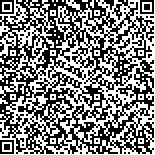附件
|
| 引用本文: | 阴琨,李中宇,赵然,王业耀,金小伟.生物完整性在时间尺度趋势分析中的偏差和校正研究——以松花江流域为例.湖泊科学,2020,32(5):1473-1483. DOI:10.18307/2020.0519 |
| YIN Kun,LI Zhongyu,ZHAO Ran,WANG Yeyao,JIN Xiaowei.On the generation and correction of deviation of biological integrity assessment for time-scale trend analysis: A case study of Songhua River Basin. J. Lake Sci.2020,32(5):1473-1483. DOI:10.18307/2020.0519 |
|
| |
|
|
| 本文已被:浏览 4393次 下载 3569次 |

码上扫一扫! |
|
|
| 生物完整性在时间尺度趋势分析中的偏差和校正研究——以松花江流域为例 |
|
阴琨1, 李中宇2, 赵然2, 王业耀1, 金小伟1
|
|
1.中国环境监测总站, 北京 100012;2.黑龙江省生态环境监测中心, 哈尔滨 150056
|
|
| 摘要: |
| 以松花江流域为对象,利用2012—2015年底栖动物调查数据及生物完整性指数(index of biotic integrity,IBI)评价结果,定量分析并阐释了IBI(基于参照位点法)在时间尺度趋势分析中产生的偏差和影响,提出采用校正系数r(r表示参数赋分计算中,比较年参数基础值相对初始年参数基础值的倍数)及初始年数据对IBI结果进行校正的方法.研究表明,正向参数(干扰越大分值越低的参数)参照组2013—2015比较年的值较初始年(2012年)呈现不同程度升高,反向参数(干扰越大分值越高的参数)受损组值呈现下降.同时,正向参数和反向参数的r值分别分布在1.1~4.9和0.7~0.8之间,参照组/受损组参数的95th年度间变化显著,参数赋分环节的记分偏差不可忽略.在评价标准划分环节中,最差及优良区域占比的差异达10.0%~13.4%,偏差对趋势分析的干扰显著.2012—2015各年度IBI经校正后,评价达良好-优状态的区域占比较校正前高4.3%~13.3%,评价为很差状态的区域占比较校正前低6.7%~30.0%.完整性评价中关键环节产生的偏差可显著影响时间尺度趋势的分析和判定,基于校正的评价方法可以初步解决完整性评价在趋势分析中产生的偏差干扰问题. |
| 关键词: 生物完整性指数 时间尺度 趋势分析 偏差校正 松花江流域 |
| DOI:10.18307/2020.0519 |
| 分类号: |
| 基金项目:国家自然科学基金项目(41977364)、北京市优秀人才培养资助项目和国家水体污染控制与治理科技重大专项(2017ZX07302-001)联合资助. |
|
| On the generation and correction of deviation of biological integrity assessment for time-scale trend analysis: A case study of Songhua River Basin |
|
YIN Kun1, LI Zhongyu2, ZHAO Ran2, WANG Yeyao1, JIN Xiaowei1
|
|
1.China National Environmental Monitoring Centre, Beijing 100012, P. R. China;2.Ecological and Environmental Monitoring Centre of Heilongjiang Province, Harbin 150056, P. R. China
|
| Abstract: |
| As a widely used evaluation method, index of biotic integrity (IBI) has been used in various water bodies to evaluate the state of aquatic organisms. However, some defects and limitations in the IBI method need to be studied and solved, such as the generation and interference of deviation in IBI assessment (based on the reference site method) for time-scale trend evaluation. In this study, Songhua River Basin was used to quantitatively analyze the deviation of IBI (based on reference site method) for time-scale trend evaluation, with the survey data of macrobenthos and evaluation results of IBI during 2012-2015. In addition, the method to correct the IBI results using correction coefficients r (r: during the course of metrics scoring, the multiples of metrics base value in comparative years to initial year) and data of initial year was proposed in this work. The results showed that the value of the positive metrics (decreasing response to increasing disturbance) of reference group from 2013 to 2015 were higher than those in the initial year (2012), while the reverse metrics (increasing response to increasing disturbance) of damaged group were lower. Meanwhile, r of positive metrics was mainly ranged from 1.1 to 4.9, while 0.7 to 0.8 for the reverse metrics. The metrics 95th of the reference group and the damaged group significantly changed in these years, with significant score deviation during the course of metrics scoring. Furthermore, during the course of evaluation criteria classification, the difference of the proportion of the worst and the best regions was 10.0%-13.4%, the disturbance from deviation was also significant on trend analysis. The comparative analysis of IBI results showed that after calibration in each year from 2012 to 2015, the proportion of excellent and good areas was higher (4.3%-13.3%) than that before calibration, while the proportion of poor areas was lower (6.7%-30.0%) than that before calibration. The results after calibration were consistent with the changes of characteristic parameters of aquatic organisms; however, the non-calibration results showed some contradiction. In summary, the deviations from the key parts during IBI assessment can significantly affect the trend analysis and determination, the deviation interference in temporal trend analysis can be preliminarily solved by the correction method. |
| Key words: Index of biotic integrity (IBI) time scale trend analysis deviation correction Songhua River Basin |
|
|
|
|